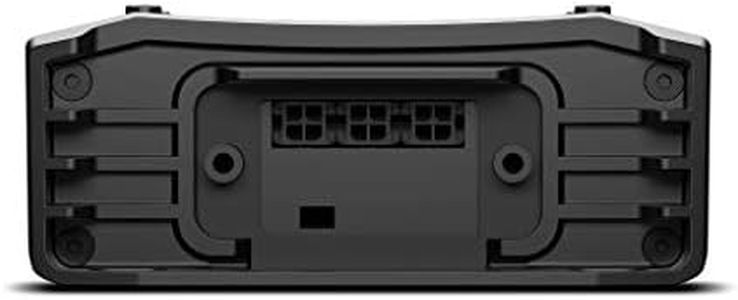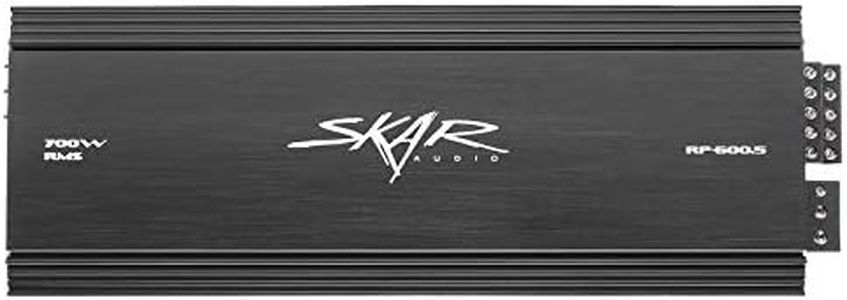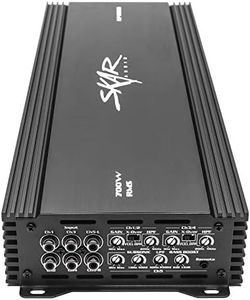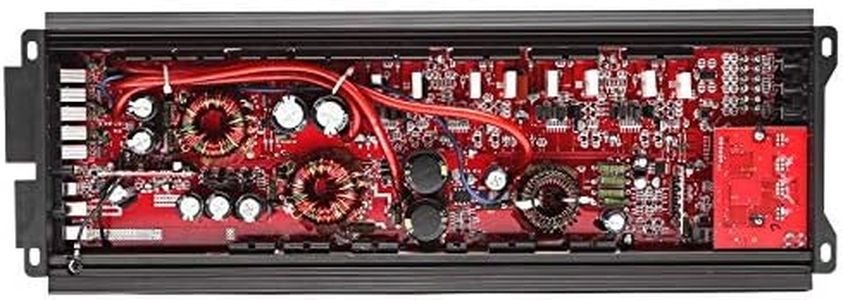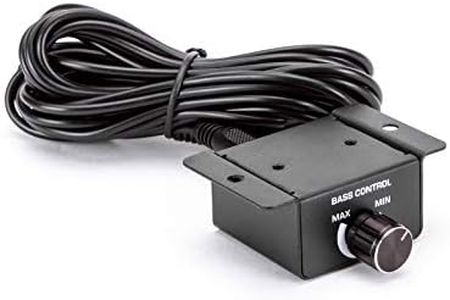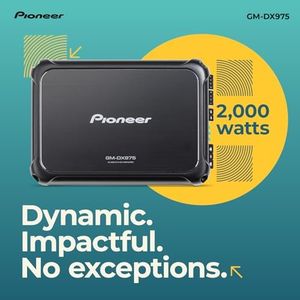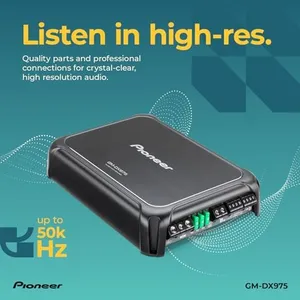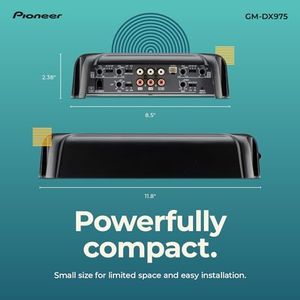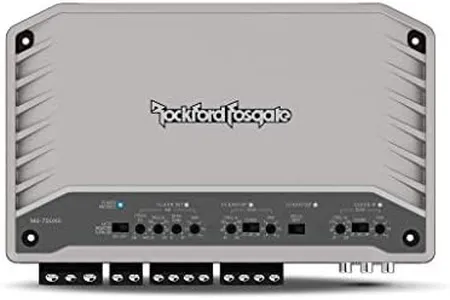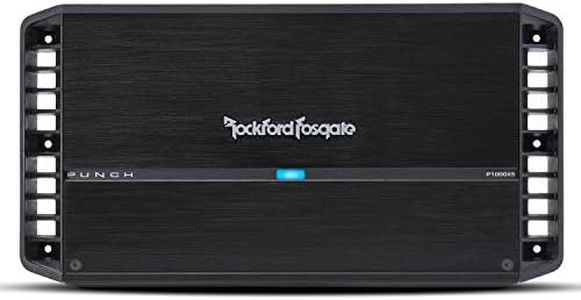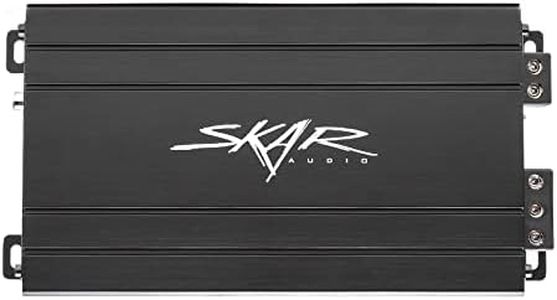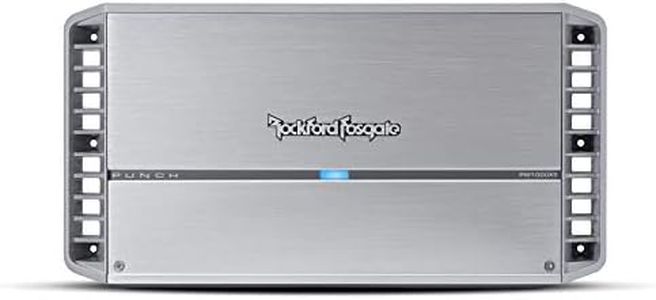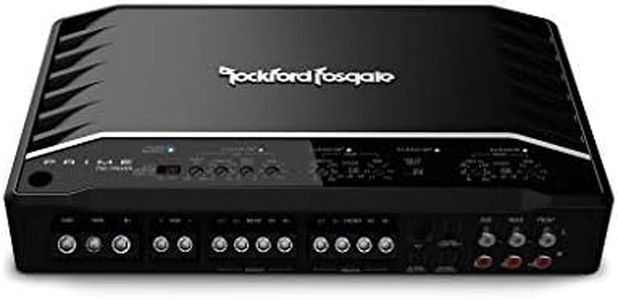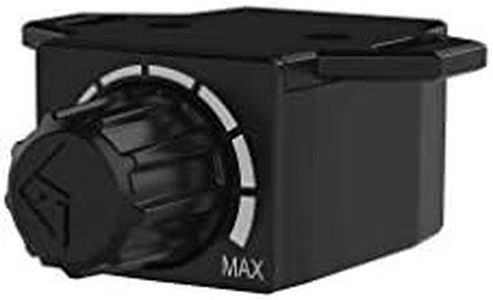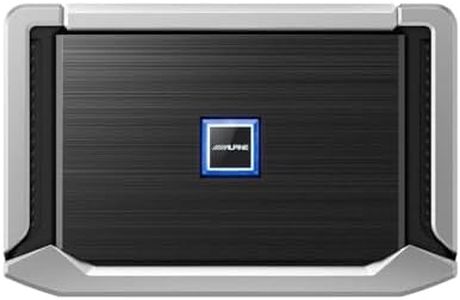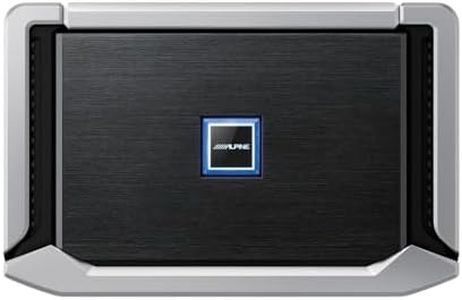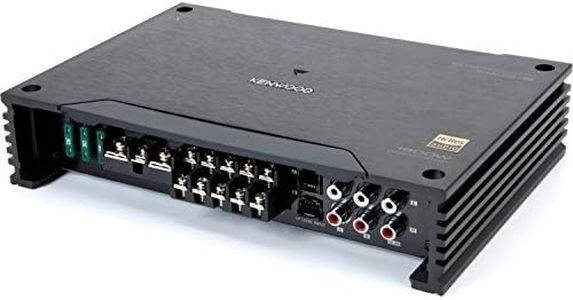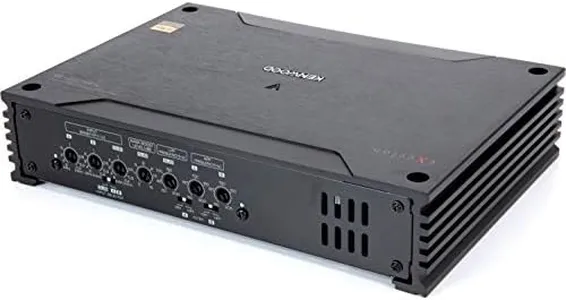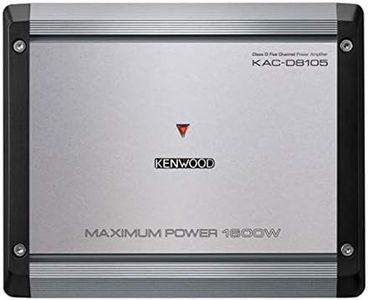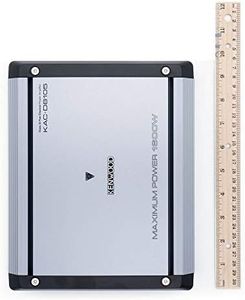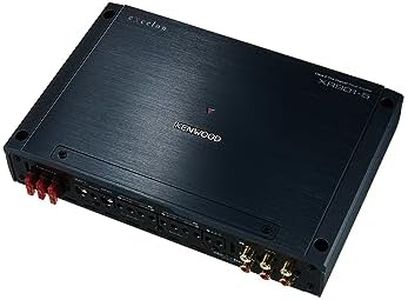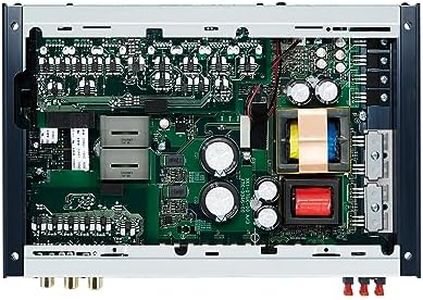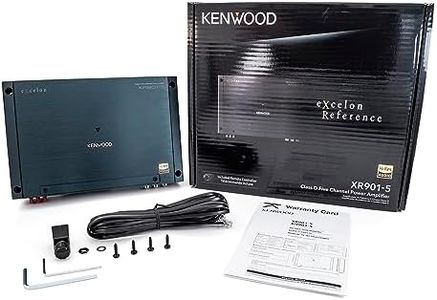We Use CookiesWe use cookies to enhance the security, performance,
functionality and for analytical and promotional activities. By continuing to browse this site you
are agreeing to our privacy policy
10 Best 5 Channel Amp For Cars
From leading brands and best sellers available on the web.Top 10 Best 5 Channel Amp For Cars 2025 in Canada
#1
Winner
Rockford Fosgate M5-1500X5 IPX6 Element Ready 1500-Watt 5-Channel Marine Amplifier with Dynamic Power
Rockford Fosgate M5-1500X5 IPX6 Element Ready 1500-Watt 5-Channel Marine Amplifier with Dynamic Power
Power Output (Watts RMS): 1500 Watts
Number of Channels: 5
Input Types (High-Level and Low-Level Inputs): high and low-level inputs
Size and Installation Flexibility: 40.6 x 15.2 x 10.2 cm; Surface mount
Thermal and Overload Protection: thermal and overload protection
Chosen by 1441 this week
Skar Audio RP-600.5 700 Watt Full-Range Class AB/D 5-Channel Car Amplifier
Skar Audio RP-600.5 700 Watt Full-Range Class AB/D 5-Channel Car Amplifier
Power Output (Watts RMS): 60W per channel, 200W subwoofer
Number of Channels: 5
Crossover Controls: low-pass, high-pass, bass boost
Input Types (High-Level and Low-Level Inputs): high and low-level inputs
Size and Installation Flexibility: 58.4x17.8x7.6 cm, surface mount
Thermal and Overload Protection: 4-way protection: heat, voltage, shorts, DC
Pioneer GM-DX975 - Powerhouse Amplifier with 2,000 Watts, Class-D Technology, 5-Channel, Variable Low-Pass Filter, Compact Design, and Remote Bass Boost Control
Pioneer GM-DX975 - Powerhouse Amplifier with 2,000 Watts, Class-D Technology, 5-Channel, Variable Low-Pass Filter, Compact Design, and Remote Bass Boost Control
Power Output (Watts RMS): 2000 Watts
Number of Channels: 5
Crossover Controls: variable low-pass filter
Input Types (High-Level and Low-Level Inputs): gold-plated RCA connections
Size and Installation Flexibility: 21.6 x 30.2 x 6 cm, compact
Thermal and Overload Protection: overheat, voltage, overload protection
Rockford Fosgate M2-750X5 Marine 750-Watt 5-Channel Amplifier
Rockford Fosgate M2-750X5 Marine 750-Watt 5-Channel Amplifier
Power Output (Watts RMS): 750 Watts RMS
Number of Channels: 5
Crossover Controls: adjustable gain and Punch EQ
Size and Installation Flexibility: 7 x 2 x 11 inches, compact
Thermal and Overload Protection: Built-in thermal and overload protection
Rockford P1000X5 Punch 5-Channel Amplifier
Rockford P1000X5 Punch 5-Channel Amplifier
Power Output (Watts RMS): 40W to 4 speakers, 125W bridged
Number of Channels: 5
Crossover Controls: 12dB per octave
Input Types (High-Level and Low-Level Inputs): High-level and low-level inputs
Size and Installation Flexibility: 38.1x19.8x6.1 cm, car mount
Thermal and Overload Protection: Cast aluminum heatsink cooling
Alpine X-A90V X-Series 5-Channel Power Density Amplifier
Alpine X-A90V X-Series 5-Channel Power Density Amplifier
Power Output (Watts RMS): 75W main, 300W subwoofer at 4 ohms
Number of Channels: 5
Input Types (High-Level and Low-Level Inputs): Supports high and low-level inputs
Size and Installation Flexibility: 15.2x27.9x35.6 cm, surface mount
Thermal and Overload Protection: Class-D design prevents overheating
Kenwood X802-5 eXcelon 5 Channel 1600 Watts Max Power Car Audio Amplifier
Kenwood X802-5 eXcelon 5 Channel 1600 Watts Max Power Car Audio Amplifier
Power Output (Watts RMS): 1600 watts max power
Number of Channels: 5
Input Types (High-Level and Low-Level Inputs): speaker level input harness
Size and Installation Flexibility: 30.5x22.9x10.2 cm; compact; terminals one side
Kenwood KAC-D8105 Class D 5-Channel Power Amplifier, For Car, Grey
Kenwood KAC-D8105 Class D 5-Channel Power Amplifier, For Car, Grey
Power Output (Watts RMS): 50W@4Ω, 75W@2Ω, 300W subwoofer
Number of Channels: 5
Crossover Controls: variable high/low pass filters, bass boost
Input Types (High-Level and Low-Level Inputs): high-level and low-level inputs
Size and Installation Flexibility: 30.48x11.43x25.4 cm, compact design
#10
Kenwood XR901-5 5 CHANNEL REF SERIES AMP
Kenwood XR901-5 5 CHANNEL REF SERIES AMP
Power Output (Watts RMS): 420 watts RMS
Number of Channels: 5
Crossover Controls: onboard crossovers
Size and Installation Flexibility: 16.8 x 26 x 5.1 cm, surface mount
Thermal and Overload Protection: built-in overheating and overload protection
Buying Guide for the Best 5 Channel Amp For Cars
Choosing a 5-channel amplifier for your car is a great way to power both your speakers and a subwoofer from a single unit, making your audio system more organized and efficient. The right amp can dramatically improve your sound quality, but picking the best one depends on understanding a few key specifications. By learning what these specs mean and how they relate to your listening habits and car setup, you can make a choice that fits your needs and ensures your music sounds its best.Power Output (Watts RMS)Power output, usually measured in watts RMS per channel, tells you how much continuous power the amp can deliver to each speaker and the subwoofer. This is important because it determines how loud and clear your music will sound without distortion. Lower power (around 30-50W per channel) is suitable for factory or entry-level speakers, while higher power (75-100W or more per channel) is better for aftermarket or high-performance speakers. For the subwoofer channel, look for higher wattage (200W or more) to ensure deep, punchy bass. Choose an amp with power ratings that match or slightly exceed your speakers’ and subwoofer’s recommended RMS ratings for the best performance.
Number of ChannelsA 5-channel amp has four channels for your main speakers (front and rear) and a dedicated fifth channel for a subwoofer. This setup is ideal if you want to power a complete car audio system with one amplifier. Make sure you actually have four speakers and a subwoofer, or plan to add them, to take full advantage of all five channels. If you only have two speakers and a sub, a 3-channel amp might be enough.
Signal-to-Noise Ratio (SNR)The signal-to-noise ratio measures how much background noise the amp produces compared to the music signal. A higher SNR (measured in decibels, dB) means cleaner, clearer sound with less hiss or static. SNR values above 80dB are generally good, while 90dB or higher is excellent. If you’re sensitive to audio quality or have high-end speakers, look for a higher SNR.
Crossover ControlsCrossover controls let you adjust which frequencies go to each channel, helping you send only bass to the subwoofer and mids/highs to the speakers. This is important for getting the best sound and protecting your speakers from damage. Look for amps with adjustable high-pass and low-pass filters, and possibly a subsonic filter for the subwoofer. If you want to fine-tune your system or have specific sound preferences, more flexible crossover controls are helpful.
Input Types (High-Level and Low-Level Inputs)Amps can accept different types of input signals from your car stereo. Low-level (RCA) inputs are standard for aftermarket head units, while high-level (speaker wire) inputs are needed if you’re connecting to a factory stereo without RCA outputs. Make sure the amp you choose has the right inputs for your setup. If you’re keeping your factory stereo, high-level inputs are essential.
Size and Installation FlexibilityThe physical size of the amp matters because it needs to fit somewhere in your car, like under a seat or in the trunk. Larger amps may offer more power but can be harder to install in tight spaces. Measure your available space before choosing, and consider how easy it will be to run wiring and keep the amp cool. If you have limited space, look for compact models designed for tight installations.
Thermal and Overload ProtectionProtection features help prevent damage to the amp and your car’s electrical system. Thermal protection shuts the amp off if it gets too hot, while overload and short-circuit protection guard against wiring problems. These features are important for reliability and safety, especially if you play music loudly or for long periods. If you want peace of mind and long-term durability, make sure your amp has these protections.




